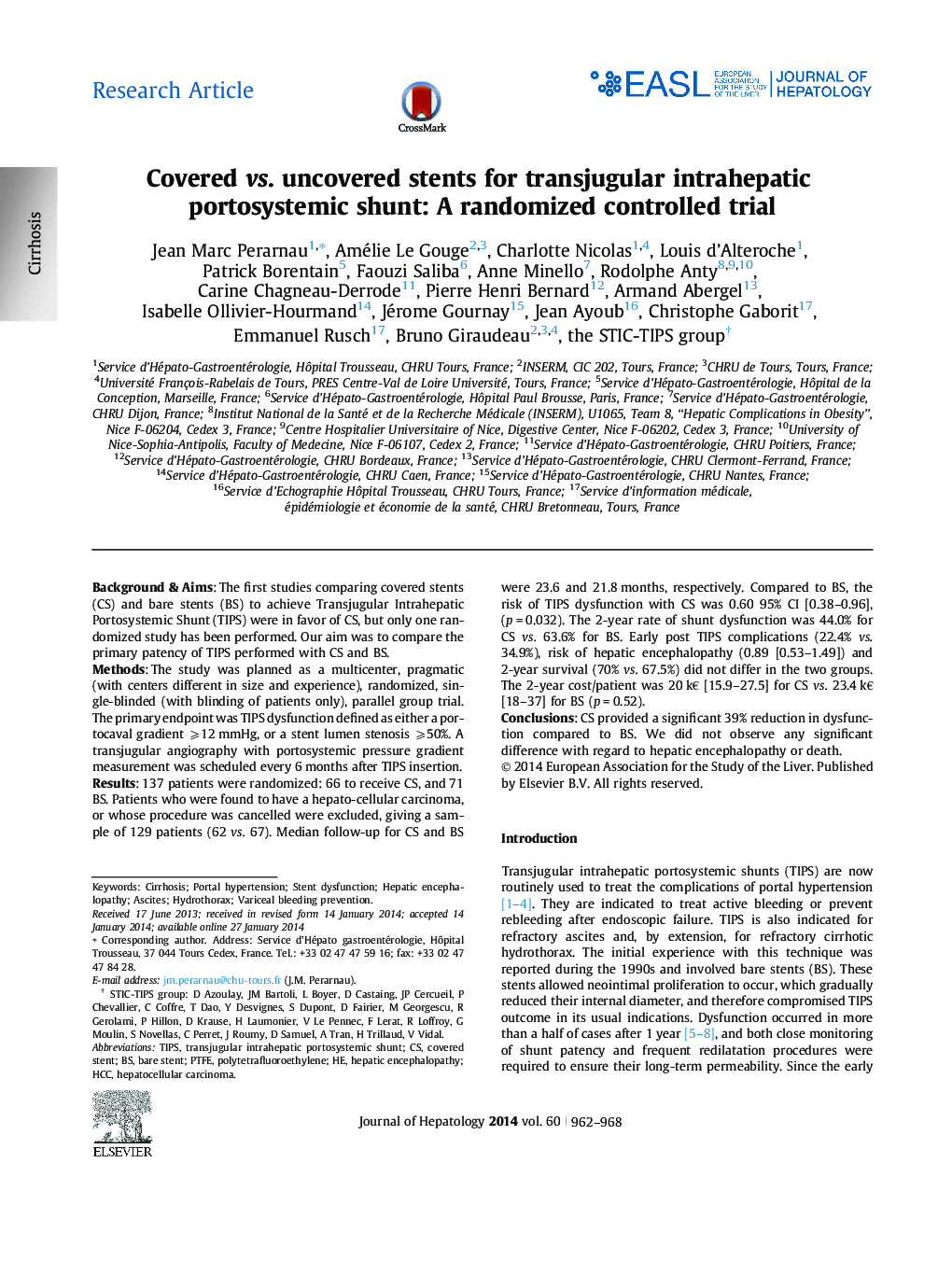| Article ID | Journal | Published Year | Pages | File Type |
|---|---|---|---|---|
| 6103575 | Journal of Hepatology | 2014 | 7 Pages |
Background & AimsThe first studies comparing covered stents (CS) and bare stents (BS) to achieve Transjugular Intrahepatic Portosystemic Shunt (TIPS) were in favor of CS, but only one randomized study has been performed. Our aim was to compare the primary patency of TIPS performed with CS and BS.MethodsThe study was planned as a multicenter, pragmatic (with centers different in size and experience), randomized, single-blinded (with blinding of patients only), parallel group trial. The primary endpoint was TIPS dysfunction defined as either a portocaval gradient ⩾12 mmHg, or a stent lumen stenosis ⩾50%. A transjugular angiography with portosystemic pressure gradient measurement was scheduled every 6 months after TIPS insertion.Results137 patients were randomized: 66 to receive CS, and 71 BS. Patients who were found to have a hepato-cellular carcinoma, or whose procedure was cancelled were excluded, giving a sample of 129 patients (62 vs. 67). Median follow-up for CS and BS were 23.6 and 21.8 months, respectively. Compared to BS, the risk of TIPS dysfunction with CS was 0.60 95% CI [0.38-0.96], (p = 0.032). The 2-year rate of shunt dysfunction was 44.0% for CS vs. 63.6% for BS. Early post TIPS complications (22.4% vs. 34.9%), risk of hepatic encephalopathy (0.89 [0.53-1.49]) and 2-year survival (70% vs. 67.5%) did not differ in the two groups. The 2-year cost/patient was 20 k⬠[15.9-27.5] for CS vs. 23.4 k⬠[18-37] for BS (p = 0.52).ConclusionsCS provided a significant 39% reduction in dysfunction compared to BS. We did not observe any significant difference with regard to hepatic encephalopathy or death.
